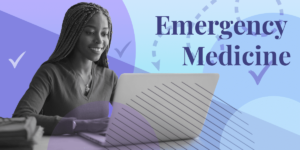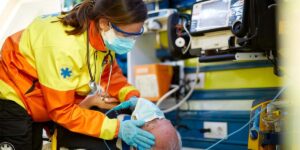Medical emergencies can occur suddenly and unexpectedly, and knowing how to respond promptly can make a critical difference in saving lives. Whether you’re dealing with a heart attack, stroke, severe allergic reaction, or other medical crisis, taking immediate action is essential for the best possible outcome. In this comprehensive guide, we’ll explore the importance of prompt action in medical emergencies and provide a step-by-step overview of how to respond effectively.
Understanding Medical Emergencies
Medical emergencies can encompass a wide range of conditions, including:
- Heart Attack: Symptoms may include chest pain, shortness of breath, nausea, and dizziness.
- Stroke: Symptoms may include sudden numbness or weakness, especially on one side of the body, confusion, trouble speaking or understanding speech, and difficulty seeing.
- Severe Allergic Reaction (Anaphylaxis): Symptoms may include difficulty breathing, swelling of the face, lips, tongue, or throat, rapid heartbeat, and a sudden drop in blood pressure.
- Severe Bleeding: Symptoms may include heavy bleeding that won’t stop, bleeding from a wound that is deep or located on the head, neck, or trunk, and bleeding associated with a broken bone.
- Severe Burns: Symptoms may include blisters, charred or blackened skin, and severe pain.
- Choking: Symptoms may include difficulty breathing, coughing, wheezing, and a feeling of something stuck in the throat.
The Importance of Prompt Action
During a medical emergency, every second counts, and taking prompt action can mean the difference between life and death. Here’s why prompt action is crucial:
- Improves Outcomes: Prompt action can help stabilize the patient’s condition and prevent further deterioration.
- Prevents Complications: Quick intervention can help prevent complications and reduce the severity of the medical emergency.
- Saves Lives: In many cases, prompt action is the difference between life and death. By acting quickly, you can help save lives and improve the chances of a positive outcome.
Steps to Provide Emergency Medical Treatment
When faced with a medical emergency, it’s essential to stay calm and take immediate action. Here’s what to do:
1. Assess the Situation:
- Before taking any action, assess the situation to determine if it is safe to approach the person in need of help. Check for any immediate dangers, such as traffic, fire, or hazardous materials, and take steps to ensure your safety and the safety of others.
2. Call for Help:
- If the situation is life-threatening or requires immediate medical attention, call emergency services right away. In the United States, you can dial 911 to reach emergency services, including police, fire, and ambulance services.
3. Provide First Aid:
- While waiting for emergency services to arrive, provide first aid to the person in need of help. The type of first aid you provide will depend on the nature of the medical emergency. Here are some general guidelines:
- For Heart Attack:
- Have the person sit or lie down in a comfortable position.
- Loosen any tight clothing and reassure the person.
- If the person is conscious, give them aspirin to chew (if they are not allergic to it) and encourage them to rest quietly until help arrives.
- For Stroke:
- Remember the acronym FAST: Face, Arms, Speech, Time.
- Face: Ask the person to smile. Does one side of their face droop?
- Arms: Ask the person to raise both arms. Does one arm drift downward?
- Speech: Ask the person to repeat a simple phrase. Is their speech slurred or strange?
- Time: If you observe any of these signs, call emergency services immediately.
- For Severe Allergic Reaction (Anaphylaxis):
- If the person has an epinephrine auto-injector (EpiPen), help them use it as directed.
- Lay the person flat, raise their legs, and cover them with a blanket to keep them warm.
- If the person becomes unconscious, perform CPR.
- For Severe Bleeding:
- Apply direct pressure to the wound with a clean cloth or bandage until the bleeding stops.
- Elevate the injured limb above the level of the heart if possible.
- If the bleeding is severe and does not stop, apply a tourniquet.
- For Severe Burns:
- Remove the person from the source of the burn and cool the burn with cool, running water for at least 20 minutes.
- Cover the burn with a clean, dry cloth or bandage.
- Do not apply ointments, butter, or other home remedies to the burn.
- For Choking:
- Encourage the person to cough to try to dislodge the object.
- If the person cannot breathe, perform the Heimlich maneuver.
- Stand behind the person, wrap your arms around their waist, and make a fist with one hand.
- Place the thumb side of your fist against the person’s abdomen, just above their navel.
- Grasp your fist with your other hand and press into the person’s abdomen with a quick upward thrust.
4. Stay Calm and Reassure the Person:
- During a medical emergency, it’s essential to stay calm and reassure the person in need of help. Your calm demeanor can help keep the person calm and make them feel more comfortable until help arrives.
5. Follow Instructions from Emergency Services:
- Once you have called emergency services, follow any instructions they give you over the phone. They may provide you with further guidance on how to provide first aid until help arrives.
Conclusion
Prompt action is crucial in a medical emergency, and knowing how to respond effectively can help save lives. By recognizing the signs of a medical emergency, calling for help, providing first aid, and staying calm and reassured, you can help ensure the best possible outcome for the person in need of help. If you’re unsure how to respond in a medical emergency, don’t hesitate to call emergency services right away. With proper training and preparation, you can be ready to respond effectively in any emergency situation.




